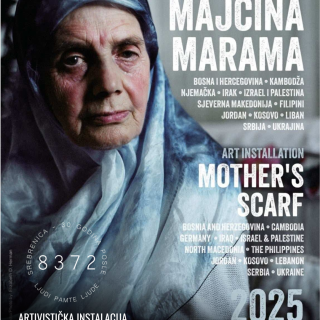The times were the way they were – there was fear, anarchy, destruction. I hid Tito in the basement. If I hadn’t done that, they would have destroyed him or melted him. One does not know what is worse.
These are paraphrased sentences (except for the authentic one about the statue: ”I hid Tito”) of a person working at the museum of a small town in Bosnia and Herzegovina while speaking about the events in 1992/1993. Charismatic and brave, she conquered students who came to her museum as part of their research. While listening to her, I felt a wave of optimism and happiness at first. Then, however, I was already becoming tired and angry at the same time, because there was almost no progress at all when it comes to the narrative in comparison to the one from 1992 that she was talking about.
If times of war are the ones when everything becomes possible and allowed, what are these times of peace then like? Tito has come out of the basement, but we are still facing a systematic destruction and neglect when it comes to anti-fascist monuments in Bosnia and Herzegovina. Broken, neglected, dislocated, re-interpreted, decapitated, stolen… Partiza, ‘the most opulent piece of my youth as an architect’, as Bogdan Bogdanović describes the Partisan Memorial Cemetery in Mostar, is a place made of layers of Mostar’s wraths, revisionisms, violent entries of new (‘more primeval’) identities, violently overriding fragile attempts at preservation (salvation is a too strong and unrealistically ambitious word in this case, having in mind the condition of the monuments). Between brutal destruction and even more brutal neglect of the acro-necropolis, there is also an almost inaudible tendency of invisibility, disappearance from the map of the city and from remembrance – the access to the Partisan Memorial Cemetery is overgrown with wild vegetation, almost drowned and imperceptible in the verdancy of Mostar.
Drowning memories is very similar to physical drowning. If we suppress something deep enough, will it also go to a basement, from which, in this case also with a different intent, will be no way out? In my research work about the Partisan Memorial Cemetery in Mostar, I am confronting this former city of the dead with the former city of the living, trying to figure out – how have we plummeted in civilisational, human and emotional terms to such an extent and when (and how) has antifascism become a swear word? At the moment when the shared history was deleted from the identity construction and when monuments as spatialised memories were suppressed? Or at the moment when an official explanation was formulated that it is too expensive to maintain (such) a monument?
As opposed to the ‘time of insanity back then’, when we believed that it had to stop at some point and that we would all come out of our basements, I see no such signs in case of the current, post-war (yes, 21 years later) insanity. Given the situation – it is necessary to make room for ‘more important’, ‘newer’ memories and public space they occupy. The artificially created competitiveness between these two historically separate periods, in the attempt to alter and re-interpret, frequently leads to an insanely simplified logic of ‘either – or’. Such as: you either hide or seek. By this, you are either against ‘the red ones’ or you are against ‘ours’. There is usually no middle ground, and nobody cares anymore about the non-aligned. In any case, the analogy with a children’s game ends here and serious contemplation as to whether we will again have to go down into basements starts.
Let us reverse the game. Let us seek. What monuments and memorials surround us? What memories do they carry? What do they commemorate? How well do we actually know the monuments that we pass by on a daily basis? Can we develop our relationship with a monument? What kind of relationship? What does the graffiti ”Tito, the vampire” at a partisan necropolis mean? Why are gravestones broken? Why do we have monuments at all? I am more and more haunted by Bogdanović’s thought that the world would be a better place without monuments, such as they are built, because we are simply unable to build monuments that would represent ‘a history of sagacity, ideas and sensations, rather than a history of overpowering’. There are no more of his contemplative flirtations, and everything that could remain for us are stage displays, mere objects in public space, deprived of any emotional value.
Although my intention was to focus in this text on contemplations about unwanted monuments from an unwanted past, I can’t avoid the impression that the destruction undeniably also has other goals except for these ‘higher ones’. Monuments in Bosnia and Herzegovina are frequently targets of very base motives in the hide-and-seek game described in this text. I am asking myself, for example, where Isak Samokovlija, the bust stolen from the centre of Sarajevo in 2016, is hiding? And where are Vojo Dimitrijević and Antun Branko Šimić hiding? I am afraid, and the police have no information, that there is no basement for them. They were quite probably melted. Which, however, let us go back to those ‘higher goals’, is not the case with Vlado Šegrt, Savo Kovačević, Dragica Pravica in Trebinje. It seems that we are living in times of ”those that did not hide, were destroyed”. So, in times of democracy, rights, freedoms, hiding is becoming a safe option. I am afraid that we as a society are losing ourselves in the hide-and-seek game, not only in the long run and not only in future, but rather now. Nevertheless, count until ten, maybe (I refuse to stop believing it) we will stop hiding.




